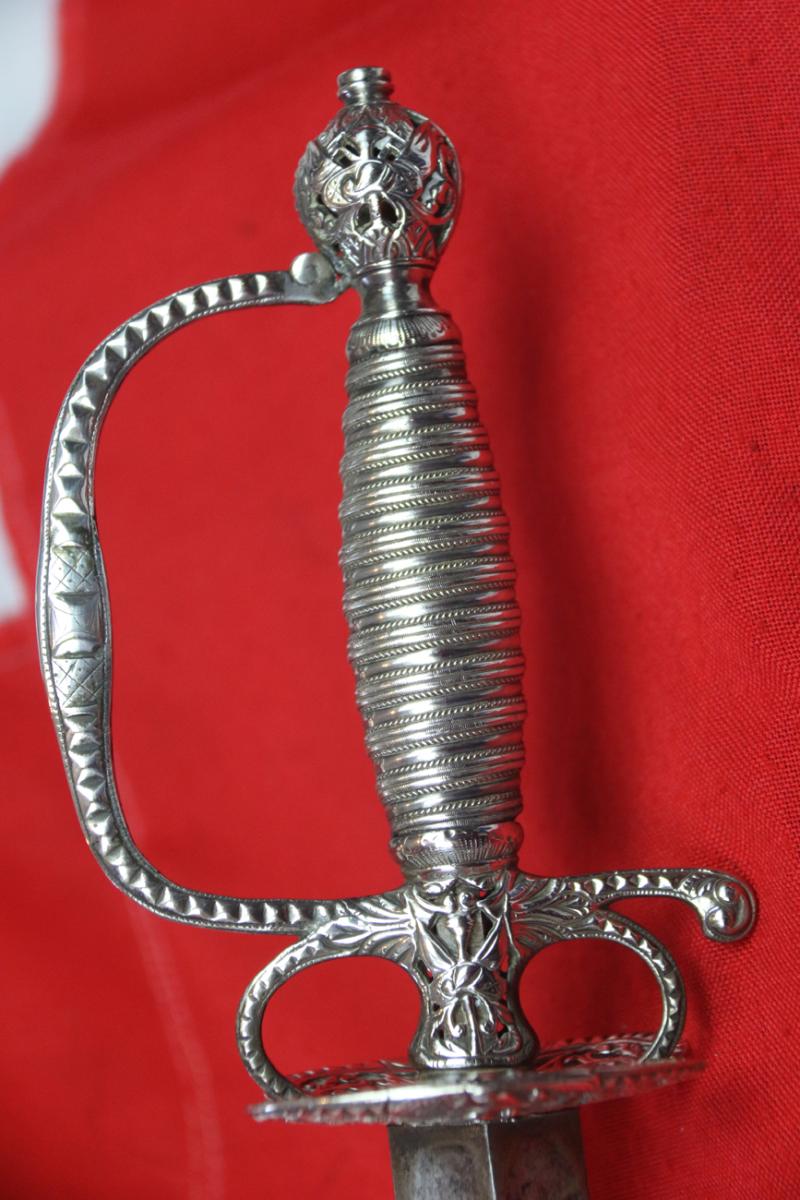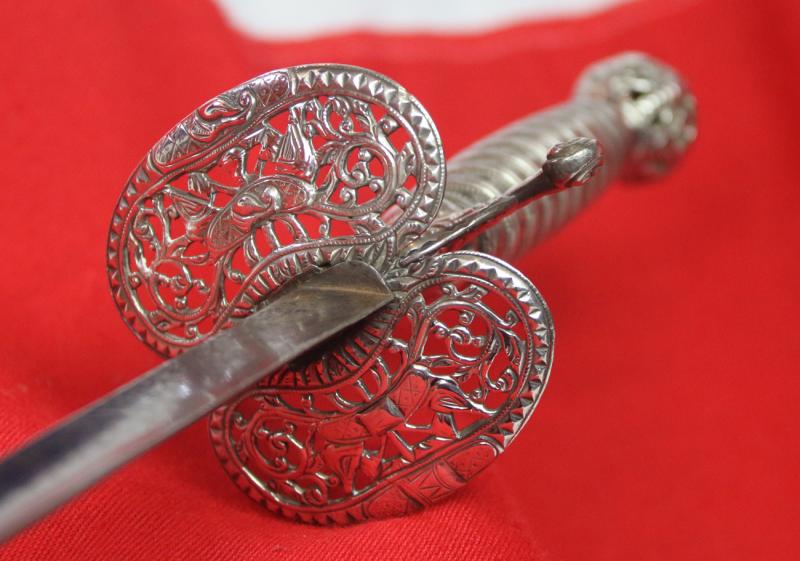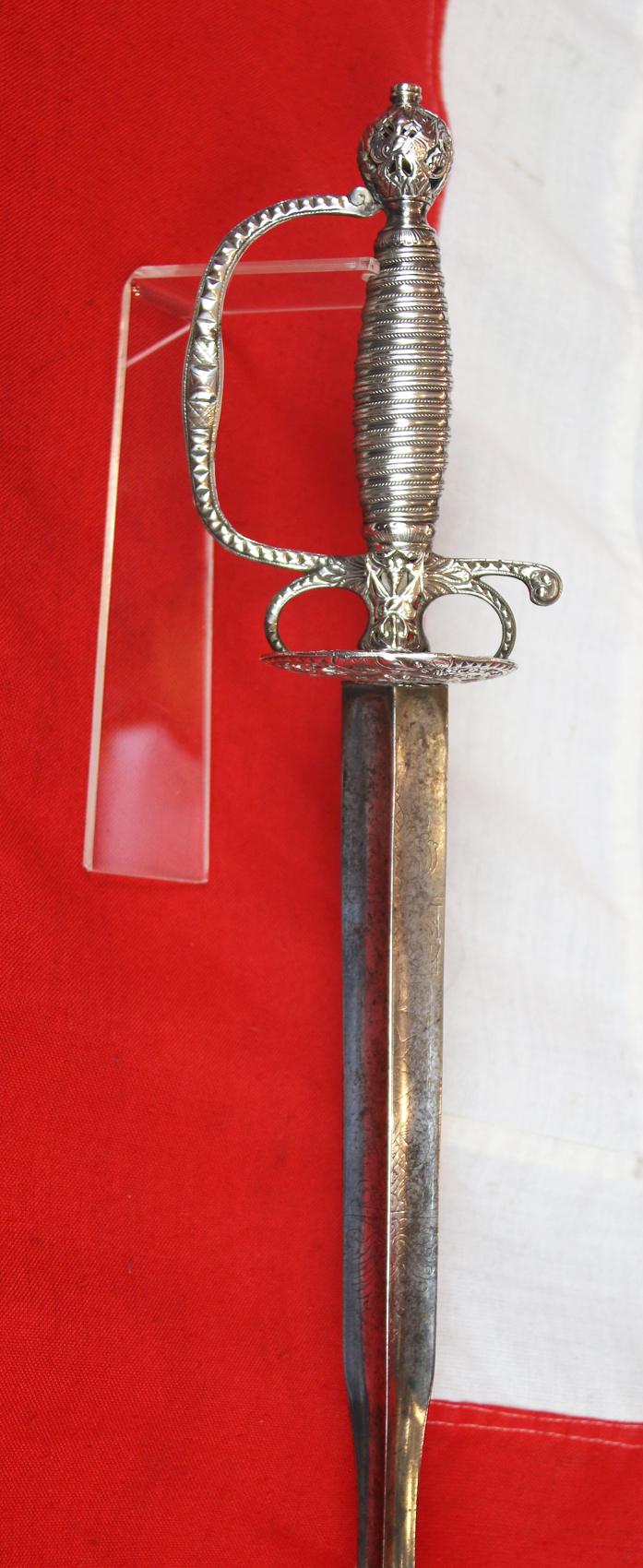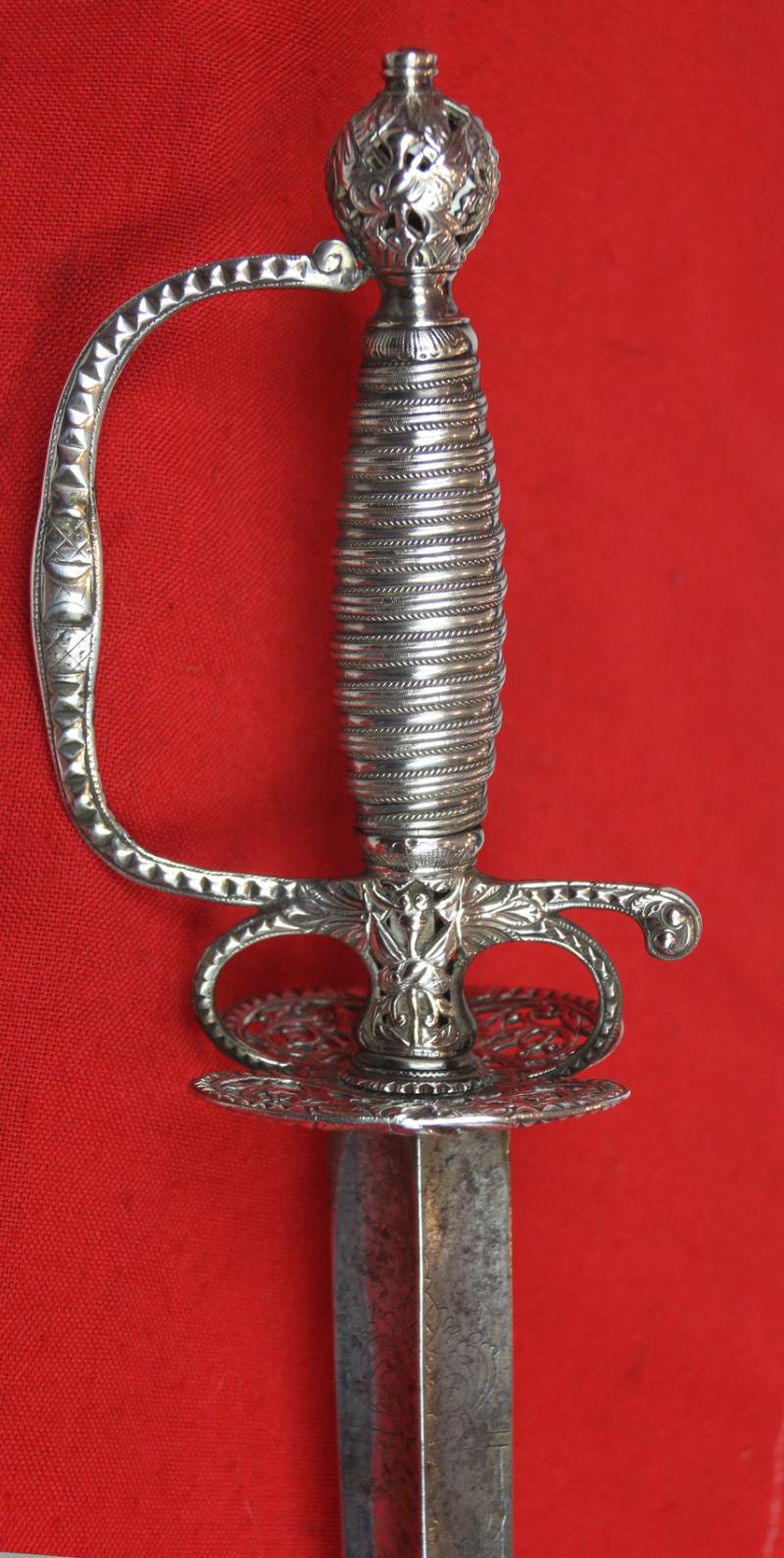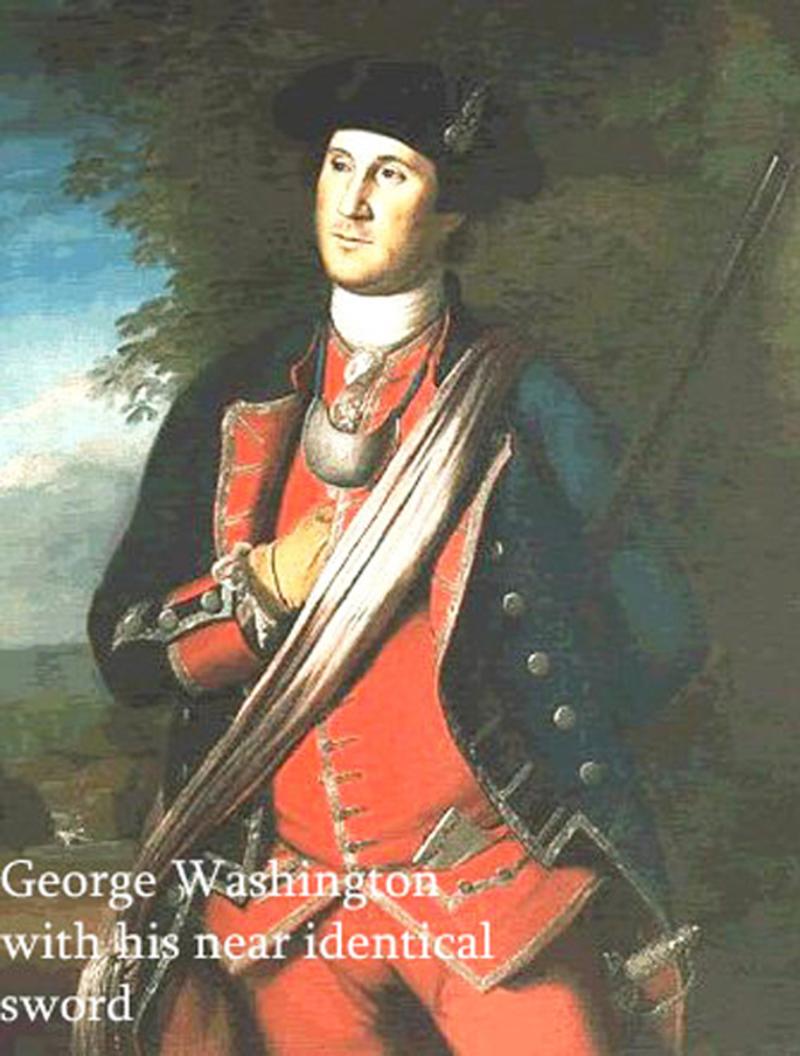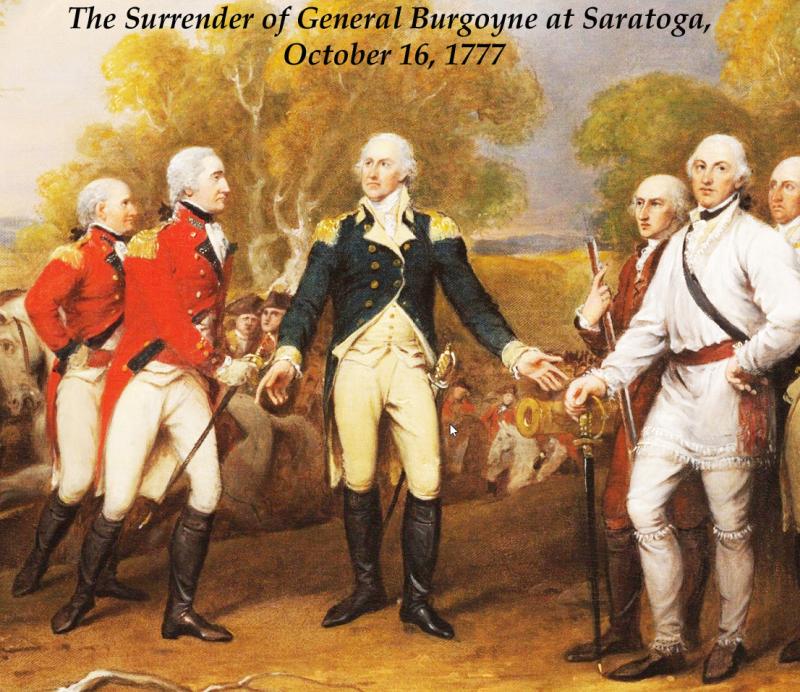A Magnificent 18th Century Anglo French Indian War To Revolution Period All Silver Hilted Small Sword with Colichmarde Blade. Probably By William Kinman. A Stunning Museum Piece, A Near Pair to General George Washington's Sword in Amazing Condition
A combination of the finest 18th century artisan's skill of both a silversmith and bespoke swordsmith. Circa 1759 possibly by William Kinman of London. no silver hallmark was required due to The 'Act of 1738' the Plate Offences Act 1738, & the 1738 exemptions, which exempted the requirement of an assay mark for gold and silver mounts of swords, daggers, pistols and guns
General George Washington, later the first President of the United States, had a near identical sword that he used during his service as commander of the new American Army in the American War of Independance from 1776 onwards. Born in the Colony of Virginia, Washington became the commander of the Virginia Regiment during the French and Indian War (1754–1763). He was later elected to the Virginia House of Burgesses, and opposed the perceived oppression of the American colonists by the British Crown. When the American Revolutionary War against the British began in 1775, Washington was appointed commander-in-chief of the Continental Army. He directed a poorly organized and equipped force against disciplined British troops. Washington and his army achieved an early victory at the Siege of Boston in March 1776 but were forced to retreat from New York City in November. Washington crossed the Delaware River and won the battles of Trenton in late 1776 and Princeton in early 1777, then lost the battles of Brandywine and Germantown later that year. He faced criticism of his command, low troop morale, and a lack of provisions for his forces as the war continued. Ultimately Washington led a combined French and American force to a decisive victory over the British at Yorktown in 1781. In the resulting Treaty of Paris in 1783, the British acknowledged the sovereign independence of the United States. Washington then served as president of the Constitutional Convention in 1787, which drafted the current Constitution of the United States.
Ideal in its day for duelling or close quarter combat, as well as being a simply fabulous, finest quality sword of immense beauty.
Fine cast and chased silver hilt in the elegant rococo style with double shell guard single knucklebow and pas dans. The grip has silver banding interspersed with herringbone pattern twisted silver wire.
The guard has enchanting workmanship with a scrolling, pierced, rococo Arabesque pattern. Colishmarde blade with part bright steel finish.
The highly distinctive colishmarde blades appeared in 1680 and were popular during the next 40 years at the royal European courts. The colichemarde bladed swords had a special popularity with the officers of the French and Indian War period. Even George Washington had a very fine one just as this example.
The colichemarde sword descended from the so-called "transition rapier", which appeared because of a need for a lighter sword, better suited to parrying. It was not so heavy at its point; it was shorter and allowed a limited range of double time moves.The colichemarde in turn appeared as a thrusting blade too and also with a good parrying level, hence the strange, yet successful shape of the blade.
This sword appeared at about the same time as the foil. However the foil was created for practicing fencing at court, while the colichemarde was created for dueling. With the appearance of pocket pistols as a self-defense weapon, the colichemardes found an even more extensive use in dueling.
This was achieved thanks to a wide forte (often with several fullers), which then stepped down in width after the fullers ended. The result of this strange shape was a higher maneuverability of the sword: with the weight of the blade concentrated in one's hand it became possible to maneuver the blade at a greater speed and with a higher degree of control, allowing the fencer to place a precise thrust at his/her adversary. This sword is a true work of art, in it's beauty form, quality and balance. One photo in the gallery is of General Burgoyne surrendering his similar gilt sword after the Battle of Saratoga in October 1777. Another portrait of George Washington with his very similar solid silver sword sword. The 1767 Silver-Hilted Smallsword
One of Washington's most beautiful swords, this sword appears in many famous Washington paintings.
Code: 24960
2995.00 GBP


